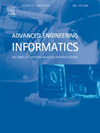投稿信息
稿件收录要求
Many important characteristics of advanced computing applications are changing the way engineers interact with computers. Explicit knowledge representation formalisms and advanced reasoning techniques are no longer the sole territory of artificial intelligence (AI). New approaches have earned acceptance in many research communities and several proposals have emerged in commercial software. In general, researchers and commercial developers now employ a range of advanced computing techniques including, but not limited to, those originating from AI research. Although some techniques are still useful for automating mundane tasks, many are capable of enhancing the working environment and empowering engineers in ways that have not previously been possible. In all areas that involve knowledge-intensive tasks, a new philosophy that is specifically tailored to computer applications in engineering is revolutionising the field: an "engineering informatics" is emerging. Advanced Engineering Informatics is an international journal that provides a forum for the exchange of topical research into supporting knowledge-intensive engineering tasks from initial conception to product disposal or demolition. The Journal publishes papers featuring novel computer applications that evaluate benefits, possibilities and risks of engineering informatics. Such applications typically include one or more of the following features: Explicit representations, describing physical and abstract components, their attributes and relationships in ways that enable shared reasoning support and incremental improvement; Symbolic and numerical process models, allowing collaborative reasoning about the conception, design, construction, control and operational behaviour of engineering artefacts; Graphical user interfaces, presenting different visualisations, including 3D views and animations of physical objects as well as other representations such as special symbols for engineering diagrams, formulas, graphs, network schemas and tables; Large-scale databases, including perhaps millions of related, shared, reusable and potentially changing elements; Interactivity, enabling individual and distributed users to carry out activities such as: interpreting intermediate solution stages; changing product and process model characteristics while examining the consequences; introducing new contextual information even at intermediate stages; modifying solution strategies on the fly; taking cues from active support; and exploring solution spaces in order to help evaluate criteria that are difficult to model explicitly. The scope of the Journal covers all activities associated with advanced engineering informatics. Thus, in addition to the technical issues described above, the Journal welcomes papers addressing the challenges of implementing and maintaining such systems in t




